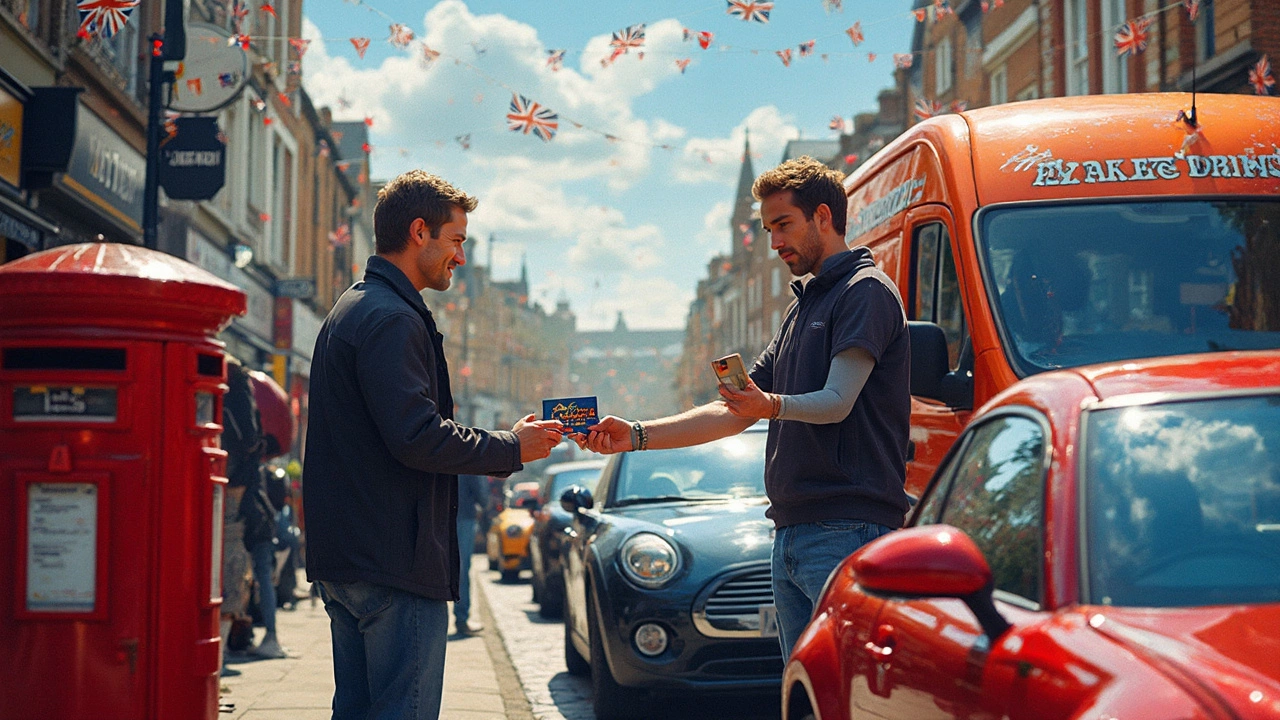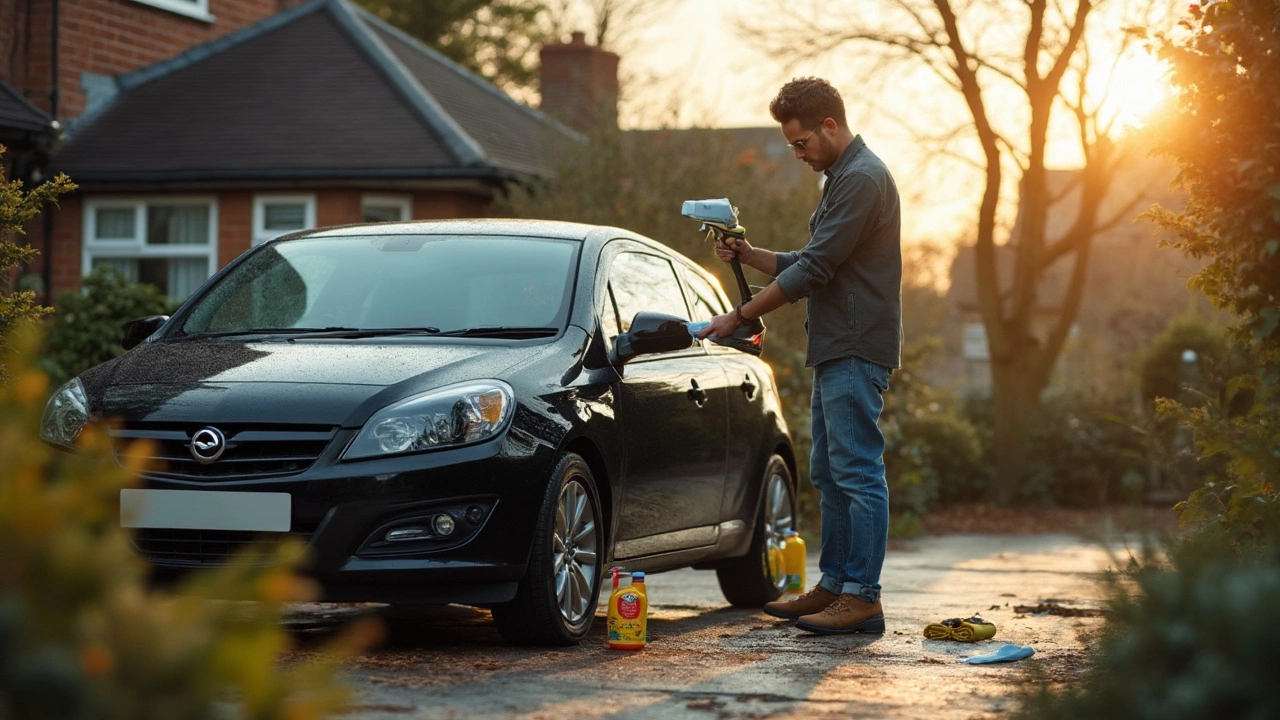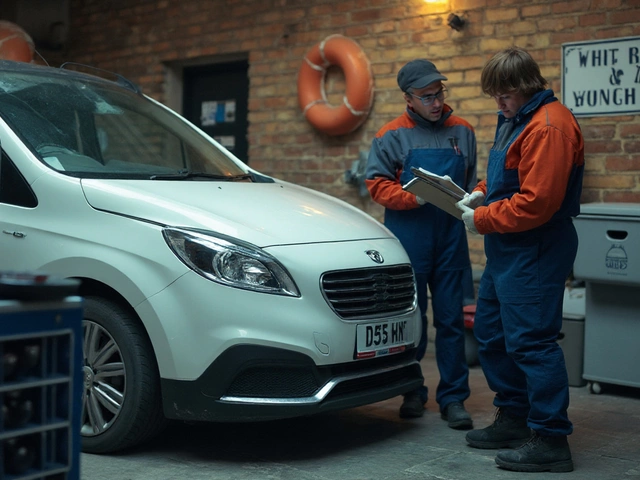If you can turn a dirty car into a head-turner, you're halfway to starting your own car detailing business. The kicker is, you don't need to rent a fancy shop or spend a fortune on pro-grade tools to get started. Most people launching out just use a solid car detailing kit, a few basic add-ons, and a work ethic that would make your grandma proud.
Planning where to start? It's all about being practical. Scope out the demand in your area before you shell out cash for products. Take a drive through your neighborhood—are there lots of dusty sedans, muddy trucks, or soccer mom vans just begging for a clean-up? That's your first sign.
When picking your gear, don't just grab whatever you see on a discount shelf. Find a car detailing kit that has decent microfiber towels, soaps that won’t wreck paint, and a reliable vacuum. Starter kits often cost less than dinner for two, and you can land your first few customers with that alone.
- Sizing Up Your Local Market
- Gathering Gear: Best Car Detailing Kits for Newbies
- Budgeting, Pricing, and Quick Cost-Saving Hacks
- Getting the Word Out: Marketing That Works on a Budget
- Step-by-Step Detailing Basics: The Must-Know Process
- Avoiding Rookie Mistakes and Growing Smart
Sizing Up Your Local Market
Diving into a small car detailing business without checking the local scene is like washing a car with a muddy sponge—it's just not smart. Before dropping cash on products, you want to be sure there’s real interest where you live.
Start with some quick research. Cruise through shopping center parking lots or walk past apartment complexes in your area. Notice how many cars look like they haven’t seen a sponge in months? That tells you local demand is real. Check if there are other detailing businesses nearby. Try a Google search like �2car detailing near me" and make note of what pops up first—that’s who you’re up against.
Don’t stop there. Jump into a few local Facebook groups or community forums. Ask what people pay for a basic car wash and interior clean. It’s blunt, but you’ll get honest numbers and sometimes find your first clients.
Here’s some useful data. According to the International Carwash Association, over 66% of U.S. drivers use a professional car wash at least once a month. And around 72% of new car buyers say they want to keep their vehicle looking new as long as possible. If you live near a big commuter area or family neighborhood, that’s a gold mine.
| City Type | Average Monthly Detailing Demand |
|---|---|
| Suburban | 4-8 clients per 100 vehicles |
| Urban | 6-12 clients per 100 vehicles |
| Rural | 2-5 clients per 100 vehicles |
Check your area’s population and car ownership stats—most U.S. suburbs have at least 1.8 cars per home. That’s a lot of potential.
Wrap up your market check with these steps:
- Scope out the competition (how many, how close, what they charge)
- Count visible dirty cars and take note of common makes/models
- Ask locals what they pay and what annoys them about current services
- Figure out if most people want mobile service or to drop their car off
The more you know about what locals actually want, the easier it is to carve out your niche—and to avoid offering stuff nobody will pay for.
Gathering Gear: Best Car Detailing Kits for Newbies
You don’t need to drop thousands of bucks on heavy-duty equipment to kick off your car detailing business. The right starter kit gives you almost everything you need to impress those first few clients. Think of it as your toolbox – it should be simple, reliable, and only cover the basics that matter.
Most entry-level kits you’ll find online or at auto stores have the necessities:
- Microfiber towels (at least five – you’ll need more than you think)
- Automotive soap – gentle stuff, pH-balanced, doesn’t strip wax
- Wheel cleaner (spray-on, acid-free is the way to go)
- Wash mitt or sponge – softer is always safer for paint
- Spray wax or quick detailer for finishing touches
- Interior cleaner – good for dashboards, seats, and cup holders
Skip the overpriced 12-piece kits loaded with random items you’ll never use, like scratchy sponges or mislabeled chemical bottles. Instead, look for reviews that mention streak-free results, durability, and bottles that don’t leak. Popular picks for newbies include the Meguiar’s Complete Car Care Kit or Chemical Guys’ 9-Piece Detailing Arsenal. You can regularly find these for under $70, and they last longer than you’d expect if you use them right.
| Kit Name | Price Range (USD) | # of Items | Main Highlights |
|---|---|---|---|
| Meguiar’s Complete Car Care Kit | $60-70 | 12 | pH-balanced soap, spray wax, clay bar, interior cleaner |
| Chemical Guys 9-Piece Arsenal | $65-75 | 9 | Good towels, foam gun, all-in-one products |
| Turtle Wax Ultimate Kit | $40-55 | 10 | Wheel cleaner, tire shine, basic wax |
It’s also smart to add a small portable vacuum for interior jobs – something like a Shop-Vac Micro for under $50. If you’re on a super tight budget, you can get away with a bucket, two towels, dish soap (not ideal but works in a pinch), and a glass cleaner. But for repeat business, you want decent products that make your work stand out.
Here are a few tips to stretch your budget and kit:
- Buy extra microfiber towels in bulk – the cheap ones fall apart fast
- Refill bottles instead of buying new kits every time
- If you work out of your car, keep gear organized in a plastic tote or backpack
Don’t get bogged down getting every shiny gadget you see online. Focus on quality over quantity, and you’ll look like a pro even before you land your tenth job.
Budgeting, Pricing, and Quick Cost-Saving Hacks
Getting into the car detailing business doesn't have to eat up your savings. Most people spend between $300 and $800 to get going—and that’s if you’re smart about what you buy and how you run things. Make every dollar count, especially starting out.
Here’s where your money will probably go:
- Detailing kit (think towels, vacuums, soaps): $75–$200
- Portable vacuum and basic cleaning gear: $60–$150
- Bucket, brushes, basic protection gear: $25–$75
- Mobile business insurance (recommended but not required day one): $30–$60/month
- Marketing (cheap flyers, first website, or social ads): $50–$150
If you’re pressed for cash, skip pricey branding, save business cards for later, and focus on essentials you’ll actually use. My first setup fit easily in the trunk of our sedan, and I still use most of those same tools today.
When it comes to pricing, don’t try to undercut everyone else—that usually just causes headaches. Offer basic packages that cover the common stuff like exterior wash, quick vacuum, and a wipe-down. Customers usually pay between $40 and $80 for a no-frills detail. Step up with extras (wax, pet hair, stain removal), and you can bump those numbers to $120 or more. Test your market and see what flies in your area.
| Service Level | Average Price (USD) | Time Spent (Minutes) |
|---|---|---|
| Basic Exterior/Interior | 45–80 | 60–90 |
| Detail with Extras | 90–150 | 120–180 |
Quick ways to save cash early on:
- Buy supplies in bulk—microfiber towels and cleaners go quick. Warehouse deals save money.
- Use all-purpose cleaning products before buying specialized ones for every surface.
- Check community swap groups for lightly used gear—sometimes pros upgrade and sell off decent stuff cheap.
- Pass the cost of upgrades onto customers. Want interior shampoo or pet hair removal as options? Offer them as add-ons.
If you’re hustling solo, every saved dollar goes straight to your pocket or pays for your next upgrade. Keep your overhead tiny and reinvest profits for better gear once your bookings pick up.

Getting the Word Out: Marketing That Works on a Budget
If you’re launching a car detailing business, don’t let a small marketing budget slow you down. Plenty of car detailers started with just word of mouth and free tools online. You want as many eyeballs on your work as possible—without blowing your budget.
First up, don’t skip local Facebook groups and community pages. Post before-and-after shots (with your customer's OK, of course), share deals for new clients, and mention exactly what part of town you serve. Genuine photos sell way more than stock images ever could. I booked three of my first ten jobs off nothing but a split image of a detailed SUV.
Make sure to grab a Google My Business listing. It’s free and lists you for local searches like “car detailing near me.” Around 46% of searches on Google are looking for local info—if you’re not showing up, you’re invisible. Ratings and photos help boost your spot in the results.
- Ask every happy customer for a review—text them a direct Google review link when you finish a job. Don’t be shy about it; most folks are happy to help.
- Keep your contact info updated everywhere. Nothing tanks trust quicker than an old phone number or dead link.
- Try handing out business cards at local car washes, pickup sports games, and community events. For the price of a pizza, you can get a hundred cards printed online.
- Offer a referral or first-time discount. Even $5 off can get people talking and bring in more clients than expensive ads.
If you want to see how these moves stack up, here’s what new detailers I know typically spend and what works best for the money:
| Marketing Channel | Typical Cost (USD) | Estimated Jobs Booked (Per $100) |
|---|---|---|
| Facebook Groups/Pages | Free | 5–15 |
| Google My Business | Free | 3–8 |
| Business Cards (100) | $15–$25 | 2–5 |
| Referral Discount | $5/job | 3–10 |
| Local Flyers | $40 | 1–3 |
Trying some of these doesn’t mean you have to be on every channel. Just pick two or three, keep them updated, and respond fast when someone messages you. If people see you’re real and local, they’ll trust you with their ride faster than you’d think.
Step-by-Step Detailing Basics: The Must-Know Process
When you launch your car detailing business, a simple, repeatable process makes you both fast and thorough. Good news: you don’t need high-end tools to get pro-level results. Here’s a step-by-step breakdown to keep you on track every time.
- Start with a Dry Interior Clean. Before splashing any water, get all the trash out. Use a basic vacuum to attack floor mats, under seats, and trunk. A small detailing brush helps get crusty crumbs out of tight gaps. For fabrics, go with a simple upholstery cleaner or foam spray. If you want to look extra sharp, wipe dash and door panels with a microfiber towel and a water-based cleaner—nothing glossy that leaves grease behind.
- Pre-Rinse the Exterior. Hose down the entire car to loosen the grime. Skip the pressure washer in the beginning—it’s overkill for regular dirt and isn’t always safe on chipped paint.
- Foam and Hand Wash. Apply car soap with a foam gun (or plain bucket and sponge). Work top-down—it’s easier and stops dirt from getting dragged over clean paint. Use two buckets if you can: one for soapy water, one to rinse out muck from your mitt.
- Wheels and Tires Last. Tires carry the harshest muck and brake dust. Use a wheel-specific brush, and don’t use that same bucket or mitt on paint or windows.
- Rinse and Dry. Rinse off every inch, top-to-bottom again. Dry right away using a microfiber towel—old T-shirts or bath towels scratch paint.
- Glass and Mirrors. Last step is glass. Use an ammonia-free glass cleaner and fresh towels. Anything with ammonia can trash window tint—ask me how I know. Go in circles on one side, straight lines on the other, so any streaks are fast to spot and fix.
- Spot Protect the Finishes. Quick detail spray or spray wax on paint gives shine and minor protection. Spray it on one panel at a time, buff with a clean towel, and don’t overdo it—too much leaves streaks, especially in the sun.
After your first few jobs, you’ll find your own hacks and shortcuts, but this basic process covers all the bases and leaves every customer happy. The more consistent you get, the faster you’ll finish—and the more cars you’ll turn into repeat clients.
Avoiding Rookie Mistakes and Growing Smart
Most people starting out in the car detailing business stumble over the same problems: they undercharge, overpromise, or burn through cash on products they don’t need. Trust me, you don’t need a garage full of twenty different wax bottles. Stick to the basics, do repeatable quality work, and build up slowly from there.
One headache lots of beginners face is setting their prices too low. You want to win business, but if you’re charging $30 for a job that takes three hours, you’re not just losing money—you’re also wearing yourself out for nothing. Figure out your hourly rate and factor in your costs. Pro detailers usually aim for at least $30-$50 per hour, even for driveway operations.
Another easy trap: not paying attention to product safety or your own health. A lot of cleaning chemicals can irritate your skin or lungs. Always wear basic gloves and work in a well-ventilated space, especially if you’re using stronger cleaners.
- Don’t skip insurance: You might think you don’t need it at the start, but one slip (like scratching a customer’s Camaro) and you’re wishing you had basic liability coverage. Even part-time setups can get coverage for under $50/month.
- Stay organized: Losing track of appointments or forgetting customer requests will cost you repeat clients. Set a simple digital calendar or use a basic notebook from day one.
- Start with honest, simple marketing: Early on, you don’t need a huge website or paid ads. Post clear before-and-afters of your work on local Facebook groups and ask happy customers for Google reviews.
- Keep receipts for everything: Your gas, towels, soaps—they’re all tax deductible if you keep proof. Even if it feels boring, it saves real money at tax season.
Just to give you an idea of what new small detailers tend to trip over, here are some numbers from a 2023 industry poll about the most common first-year mistakes:
| Mistake | Percent of New Detailers |
|---|---|
| Underpricing services | 47% |
| Buying too much equipment early on | 32% |
| Missing appointments/poor scheduling | 18% |
| Not protecting themselves with insurance | 28% |
Staying sharp isn’t just about avoiding mistakes—it’s about building habits that give you room to breathe as you grow. As soon as your schedule fills up more than two or three days a week, start looking at ways to work faster (like getting better towels, not fancier waxes) or even bringing in a friend or helper during busy seasons. That’s how you go from hustling for a few bucks to running a real, stable operation—without the rookie regret.




